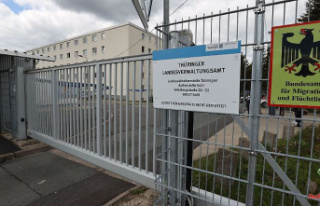For the long Höhlerfest weekend, Gera's city center is once again transformed into a festival mile. According to the city, whether the festival will be a success depends primarily on the weather.
Gera (dpa/th) - The city of Gera is expecting at least 20,000 visitors to the Höhlerfest this weekend. The festival mile in the city center offers enough space to receive 40,000 to 50,000 guests, as in peak times, said a city spokeswoman before the start of the four-day event on Friday. "But we doubt whether we can do it this fall weekend and with the rain forecast." The city festival opens on Friday evening with 784 fanfare blasts and the traditional beer keg tapping.
As in previous years, the caves - these are artificially created deep cellars - can be visited on all four days during guided tours. A parade and live music are also on the program until Monday. In addition, many shops in Gera are also open on Sundays for a shopping spree. For the first time this year, a ribbon can be bought, which can be used to give small gifts and discounts in participating shops and the like. The proceeds benefit the Höhlerfest itself. "A band is not mandatory," said the spokeswoman. The city festival is still free of charge.
The underground vaults under Gera's city center were created in the 17th and 18th centuries to store beer at a depth of five to twelve meters - under the actual cellars. Because of the constant temperature of twelve degrees and humidity between 80 and 100 percent, the caves were ideal for this. Due to the Gera beer brewing privilege of 1487, all house owners were entitled to brew beer or have it brewed.
At the end of the 1930s, the cavities were connected by corridors in order to use them as air-raid shelters. After the Second World War they were largely forgotten.
The deep cellars were only rediscovered when urban planners designed new buildings in the 1970s. A total of around 220 caves are known, which extend over a length of nine kilometers below Gera. During the GDR era, many of these cellars were filled with rubble, among other things, and a few were restored. They can only be visited on guided tours.












